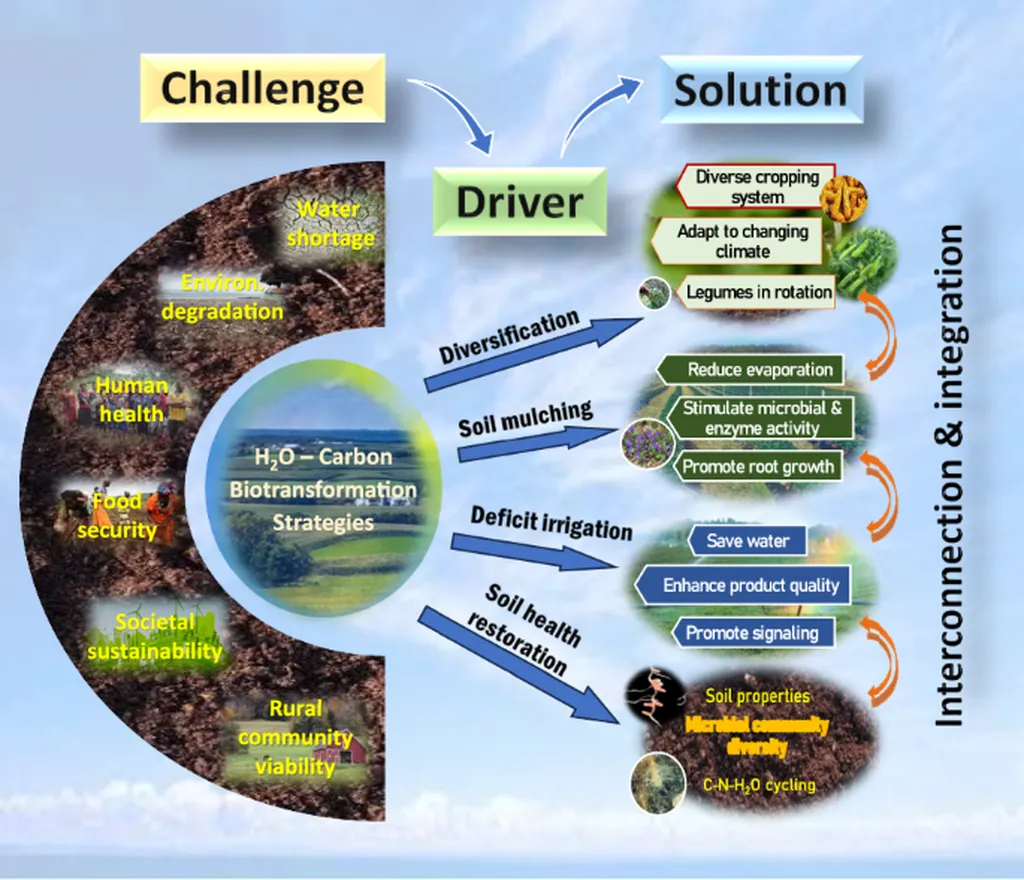In the face of mounting climate challenges, a groundbreaking study published in *Communications Earth & Environment* offers a beacon of hope for global drylands. Led by Li Wang from Wenzhou University, the research synthesizes thousands of global experiments to unveil key strategies for enhancing carbon restoration and ecosystem resilience in water-scarce regions. The findings could reshape agricultural practices and bolster food security in some of the world’s most vulnerable areas.
The study identifies four critical pathways to optimize water-to-carbon biotransformation in drylands. First, cropping diversification emerges as a game-changer, increasing net primary productivity by nearly 19%. This approach not only boosts yields but also enhances biodiversity and soil health, creating a more resilient agricultural ecosystem. “Diversification is not just about planting different crops; it’s about building a more robust and adaptive farming system,” explains Wang.
Second, regulated deficit irrigation—deliberately limiting water application to crops—cuts water use by 30–50% while improving yield-scaled water use efficiency by 3.4%. This strategy is particularly relevant for regions grappling with water scarcity, offering a practical solution to balance productivity and resource conservation. “Water is a finite resource, and we need to use it wisely,” Wang emphasizes. “This approach ensures that every drop counts.”
Soil mulching, the third strategy, increases land productivity by 22.2%. By covering the soil with organic or synthetic materials, farmers can reduce evaporation, suppress weeds, and improve soil moisture retention. The study highlights the potential of biodegradable mulches as a sustainable alternative to traditional polyethylene films, aligning with growing environmental concerns.
Finally, soil health rejuvenation strategies can sequester 1.2–3.8 tons of soil organic carbon per hectare per year. This approach involves practices like cover cropping, reduced tillage, and organic amendments, which collectively enhance soil structure, fertility, and carbon storage. “Healthy soils are the foundation of sustainable agriculture,” Wang notes. “Investing in soil health is an investment in our future.”
The study also outlines priorities for implementing these strategies, including ‘smart’ irrigation systems, carbon dioxide fertilization, rhizosphere engineering, and inclusive governance frameworks. These measures aim to reconcile water scarcity with carbon restoration, supporting the UN’s Sustainable Development Goals.
The commercial implications for the agriculture sector are profound. Farmers in dryland regions can adopt these strategies to improve yields, reduce water usage, and enhance soil health, ultimately leading to more sustainable and profitable farming practices. Agribusinesses can also capitalize on these innovations by developing and marketing products that support water-efficient irrigation, biodegradable mulches, and soil health management.
As the world grapples with the impacts of climate change, this research offers a roadmap for enhancing ecosystem resilience in drylands. By optimizing water-to-carbon biotransformation, we can create more sustainable and productive agricultural systems, ensuring food security for future generations. The findings underscore the urgent need for innovative solutions and collaborative efforts to address the pressing challenges of water scarcity and carbon loss.
With the lead author, Li Wang, affiliated with the College of Life and Environmental Science at Wenzhou University, this research represents a significant step forward in the quest for sustainable agriculture. As the global community continues to seek effective strategies for mitigating climate change, the insights from this study will undoubtedly shape future developments in the field.

